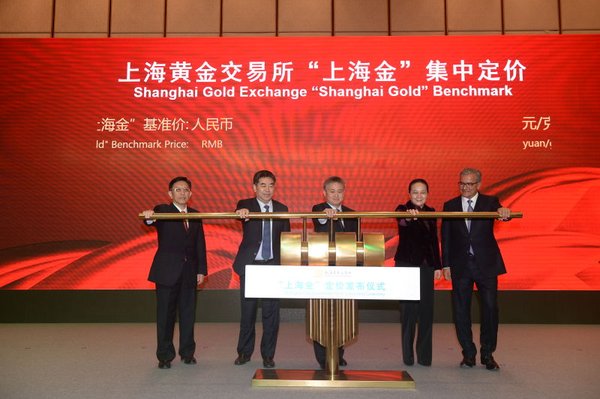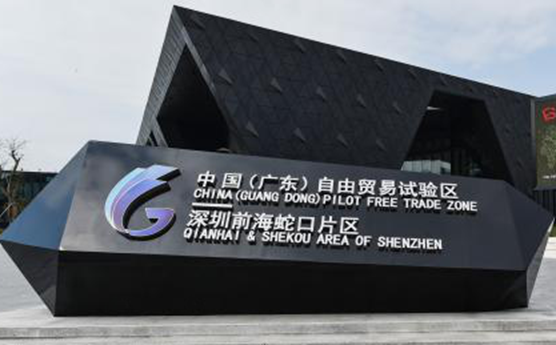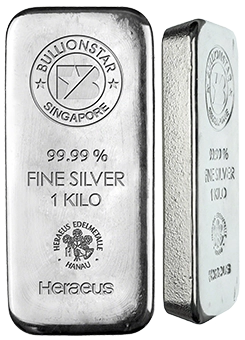China’s Golden Gateway: How the SGE’s Hong Kong Vault will shake up global gold markets
This month, Bloomberg revealed that China’s Shanghai Gold Exchange (SGE) plans to open a new bullion vault in Hong Kong – a landmark expansion that goes far beyond just opening a new physical storage vault – but that represents a strategic move to enhance China’s gold trading infrastructure and strengthen the SGE’s role in global gold price discovery.

Not forgetting that the SGE is a state-owned entity, established by and operating under the direct supervision of the China’s central bank, the People’s Bank of China (PBoC), the SGE’s three primary strategic roles are to develop the domestic Chinese gold market, internationalise the renminbi (RMB) via gold trading, and increase China’s influence in global gold pricing (via benchmarks such as the SGE’s RMB-denominated gold auctions launched in 2016).
By establishing a gold vault in Hong Kong, a Special Administrative Region (SAR) operating under the “one country, two systems" framework, the SGE is tapping into a global financial centre with a much more attractive legal and regulatory environment than mainland China, while also accelerating the internationalisation of the yuan (both onshore CNY and offshore CNH) and, if it goes to plan, attracting an extended set of international participants into China’s gold market.
The new move by the SGE to enter Hong Kong must also be viewed within a broader geopolitical and economic context, that of the current tariff battles and potential trade war between the US and China, and Beijing’s intensifying push to reduce reliance on the US dollar and strengthen the yuan’s role in global trade and finance.

By supporting gold trading on the SGE trading platform but outside of China, the new Hong Kong vault will also link Chinese physical gold trading with offshore yuan markets (and by extension potential gold – oil pricing), as well as support China’s Belt and Road initiatives, and even the ambitions of the BRICS to create alternative commodity pricing and settlement systems.
The choice of Hong Kong for the SGE vault also enhances the Hong Kong SAR’s role as a leading bullion storage hub, a gold ecosystem which even now is seeing the expansion of the Hong Kong International Airport (HKIA) bullion vault, and whose sector also includes major logistics providers such as Malca-Amit, Brinks, G4S and Loomis. The SGE move will also impact the long-established Chinese Gold and Silver Exchange (CGSE), which already works with the SGE via the SGE-CGSE ‘Gold Connect’ initiative.

In short, the SGE’s Hong Kong vault is a pivotal development that advances China’s broader economic and geopolitical goals, challenges the dominance of Western gold markets, and sets the stage for a new era of yuan-denominated gold trading and global financial influence.
Operation of the New Hong Kong Vault
Adding a Hong Kong gold vault will bring the number of SGE ‘Trading’ vaults to four. The SGE currently operates two trading vaults in Shanghai, namely the SGE domestic vault and the SGE International (SGEI) vault (a.k.a. International Board), as well as one vault in Shenzhen (a city which borders Hong Kong). As ‘trading vaults’, these vaults are “used to store physical gold that can participate in the trading and delivery business of the Shanghai Gold Exchange.”
SGE International (SGEI) is a fully-owned subsidiary of the SGE. The SGEI (International Board) vault was opened in 2014 in the Shanghai Pilot Free Trade Zone (FTZ), and is operated by China’s Bank of Communications (BOCOM). According to the SGE, “physical gold purchased or deposited on the International Board can be transferred to other countries or regions, with the same time efficiency as major international gold markets.”

The SGE’s Shenzhen vault was opened in 2019 by SGEI, and operates in conjunction with the Industrial and Commercial Bank of China (ICBC). This Shenzhen vault also supports international physical gold delivery, storage, and transactions, and “aims to strengthen SGE’s global gold trading operations.”
Right now, there are very few details available about the SGE’s new Hong Kong vault. According to Bloomberg, the vault will be operated “by a subsidiary of Bank of China Ltd.”

“Bank of China Ltd” is the Beijing headquarters of “Bank of China”, one of the ‘big four’ state owned Chinese commercial banks, and operates under the direction of mainland authorities majority owned by Central Huijin Investment, a unit of China’s sovereign wealth fund, China Investment Corporation (CIC).
As to which “subsidiary of Bank of China Ltd” the Hong Kong vault will be run by is unclear, but it may be Bank of China (Hong Kong) (BOCHK).
![]()
BOCHK, which acts as Bank of China’s Asia-Pacific headquarters, is also a subsidiary of Bank of China Ltd (due to it being a wholly owned subsidiary of BOC Hong Kong (Holdings) Ltd, which is majority-owned by BOC Ltd). BOCHK dominates Hong Kong’s banking system and is involved in offshore yuan trading as well as being the designated Renminbi / yuan clearing bank in Hong Kong.
However, the subsidiary that will operate the SGE Hong Kong vault may not be BOCHK, and could be a newly created entity directly controlled by Bank of China Ltd in Beijing. Such a structure would give Beijing more direct control, bypass to some extent Hong Kong regulatory constraints (where BOCHK is regulated by the HK Monetary Authority), and ensure strategic separation from BOCHK’s commercial banking activities.
The location of Bank of Chain’s precious metals vault in Hong Kong is also unknown, but going by recent Bank of China’s career adverts for vault staff, the new SGE vault could be located in the ‘Eastern District’ of Hong Kong Island, where a Bank of China precious metals vault is hiring vault staff.
Telegraphed SGE vault expansion
In hindsight, there were some recent clues that the SGE and Chinese State would move to open a gold vault in Hong Kong using the Bank of China.

On 21 April, the People’s Bank of China (PBoC), State Administration of Foreign Exchange (SAFE), Shanghai Municipal People’s Government, and General Administration of Financial Supervision, jointly issued the “Shanghai International Financial Center Action Plan to Further Enhance the Facilitation of Cross-border Financial Services" to accelerate the internationalisation of the yuan, one prong of which was to:
“Support the Shanghai Gold Exchange and other overseas exchanges to carry out product authorisation cooperation and expand the application of RMB benchmark prices in mainstream international markets.
Explore the internationalisation of delivery of specific varieties on the Shanghai Gold Exchange and set up overseas settlement warehouses.”
This was reported by Reuters on the same day, 21 April, when it stated that:
“The central bank said it would also support the Shanghai Gold Exchange to cooperate with other overseas exchanges and expand the application of yuan benchmark prices in global mainstream markets.”
Four days prior to that on 17 April, the president of Bank of China, Zhang Hu, and his delegation, visited the Shanghai Gold Exchange and held discussions with the chairman of the SGE Yu Wenjian (See “Bank of China visits Shanghai Gold Exchange”). These discussions undoubtedly included planning for the SGE vault in Hong Kong, since according to the SGE press release:
“Zhang Hui expressed that he will continue to strengthen in-depth cooperation with the Shanghai Gold Exchange … fully serve the overall national strategy … and contribute to the steady development of the gold market”, while “the two sides conducted in-depth discussions on how to better play the role of gold market in resource allocation.”
Choosing Bank of China as the vault operator in Hong Kong also makes sense because Bank of China (Hong Kong) is the only one of the SGE’s ten “margin deposit banks” located outside the Chinese mainland. The other nine are in China. These margin deposit banks allow SGE international members and international customers to open SGE special settlement accounts.
Furthermore, in his 2024 Policy Address in October 2024, Hong Kong Chief Executive John Lee announced plans to make Hong Kong an international gold trading centre by building top-quality gold storage facilities, integrating with Mainland China’s markets, and forming a government working group to improve gold trading systems. This working group was then formed in December 2014. And now we see the SGE Hong Kong vault being announced, a vault which will be “integrating with Mainland China’s markets”.
RMB and Yuan – Some Definitions
As a brief explanation, the official name of China’s currency is the Renminbi (RMB), and the ‘yuan’ is its unit. CNY refers to the onshore yuan traded within mainland China under strict capital controls, while CNH is the offshore yuan traded mainly in Hong Kong with fewer restrictions. CNY is tightly regulated by China’s central bank, the People’s Bank of China (PBoC), with a daily reference rate and a narrow ±2% trading band.
CNH, which trades more freely based on supply and demand, was first traded in Hong Kong but is now traded in most major global financial centres with fewer restrictions and is de facto regulated by the Hong Kong Monetary Authority (HKMA). The dual system allows China to gradually internationalise the RMB, and position it as a widely used settlement currency in global trade and finance.
In the new SGE Hong Kong setup, gold trades can settle in either CNY or CNH. This will provide investors with greater flexibility and should encourage more cross-border participation in yuan-denominated gold trading.
Benefits of trading SGE via HK
From an investor / trader perspective, trading gold for delivery in SGE’s Hong Kong vault offers the benefit of offshore settlement under Hong Kong law, while avoiding mainland capital controls.
It will also facilitate easier participation by global investors and funds in yuan denominated gold trading contracts who for whatever reason are not authorised or are unwilling to trade directly with the SGE using the Shanghai or Shenzhen vaults. This will in theory lead to a freer flow of gold between international market centres and Hong Kong, compared to what it would be if the SGE vault options were only in mainland China.

Even though it is in a free trade zone (FTZ), trading on the SGEI in Shanghai is still subject to capital controls both in and out. Foreign investors must use special FTZ accounts, with all inflows and outflows monitored by China’s FX regulator (SAFE). Repatriating funds can face delays or restrictions. In contrast, trading using the upcoming SGE Hong Kong vault should avoid these controls, as Hong Kong supports a separately regulated and freer currency trading system.
Why Hong Kong? Strategic and Legal Advantages
Hong Kong is a natural choice for the SGE and the Chinese government to launch the next phase of SGE gold trading and vaulting and to continue the internationalisation of the yuan.
Apart from Hong Kong being a Special Administrative Region (SAR) of China and physically adjacent to China mainland (with Shenzhen being literally the other side of the border), Hong Kong has a number of key advantages.
It is one of the world’s leading global financial centres. In the 2025 Global Financial Centres Index (GFCI), published in March, Hong Kong was ranked 3rd place globally behind New York and London, and the top financial centre in Asia, ahead of 4th place Singapore.
With hundreds of banks, financial institutions, and fund management companies, Hong Kong is a globally trusted hub for finance, attracting investors and institutions from all over the world.
Hong Kong also has a legal system based on English common law, offering strong protection of property rights, and independent courts. This legal certainty gives investors confidence that contracts and ownership will be upheld fairly.
The SAR’s financial sector is overseen by the well-regarded regulators – the Hong Kong Monetary Authority (HKMA) and the Securities and Futures Commission (SFC) – both of which maintain high standards of market integrity, investor protection, and financial stability.

This means that Hong Kong is a far more attractive and trusted place for trading gold in yuan compared to mainland China, where the legal environment is still less predictable and regulations are more restrictive. Hong Kong’s openness, rule of law, and regulatory clarity therefore provide the perception of a safer and more efficient platform for international investors to participate in yuan-denominated gold trading.
Hong Kong is also already a major gold trading hub and gold entrepôt, and serves as a key transit point for gold imports, exports, and re-exports (gold brought into Hong Kong and then shipped out again, often to Mainland China or other markets). Hong Kong thus acts as a crucial gateway to the Chinese gold market.
There are no import or export duties on gold into or out of Hong Kong. The Hong Kong SAR already has a long-established gold exchange, the Chinese Gold and Silver Exchange (CGSE), and hosts many well-developed gold vaults and precious metals logistics providers, including the HKIA vault at Hong Kong International Airport (which is earmarked for a major expansion), and also the Malca Amit vault adjacent to the airport, and other vaults operated by the global security firms Brinks, Loomis, and G4S.
With this strong existing infrastructure, the Hong Kong government is now aiming to elevate the city into one of the world’s leading gold trading centres (see 2024 Hong Kong Policy Address – “Propelling Hong Kong into an international gold trading centre”).
Internationalisation of the Yuan: Recent Government Actions

In addition to the SGE Hong Kong vault initiative which will contribute to the accelerated internationalisation of the yuan, the Chinese government and monetary authorities also on 21 April announced a wide range of other plans to achieve yuan internationalisation, including directing state-owned enterprises to prioritize using the yuan for overseas payments and settlements, planning to expand cross-border yuan financing to boost yuan-based trade, strengthening the Cross-Border Interbank Payment System (CIPS), and expanding offshore yuan swap lines.
RMB benchmark gold prices
The SGE has always differentiated itself through its strong focus on physical gold delivery, and offers a tangible alternative to the derivative and synthetic gold benchmarks of the London LBMA and New York COMEX duopoly.
Through its spot, deferred, and derivative contracts on both its Main and International Boards, along with its daily Shanghai Gold Benchmark Price auctions, the SGE is increasingly influencing global gold pricing, especially over the past two years, with SGE gold prices often trading at a premium to LBMA and COMEX prices.
Recalling that the 21 April action plan calls for the expanded use of RMB benchmark gold prices internationally through trading products, then its apparent that the SGE’s Hong Kong vault and offshore trading will try to harness the new physical delivery capabilities in Hong Kong and the enhanced trading liquidity and additional international participants, to boost the use of the SGE’s yuan-denominated global benchmark.
This development is therefore expected to intensify competition for the Western gold price benchmarks, and looks set to shift an ever increasing influence over gold price discovery to Asia.
Linking Gold Trading with Oil and Broader Commodity Markets
With the Chinese State via the SGE expansion to Hong Kong soon offering offshore yuan-denominated gold trading, and with the already growing volume of yuan-settled oil deals with countries such as India and Saudi Arabia, the Hong Kong vault development can also be seen as a piece of infrastructure that will allow yuan oil transactions to indirectly settle in gold. This linkage, if it takes hold, would then strengthen China’s influence over global commodity pricing and advance the goal of establishing the yuan as a dominant currency in global trade.
SGEI member, and the potential to trade via SGE Hong Kong
Currently, there are more than 110 member entities of the SGEI (International Board). How will the advent of SGE gold trading and storage in Hong Kong affect the decisions of these trading entities to continue to use the SGEI or switch some of their trading to Hong Kong. Only time will tell, but its worth looking briefly at this issue.
Apart from Chinese banks and other Chinese bullion sector companies, the main foreign bank members of SGEI include JP Morgan Chase, BNP Paribas, HSBC, Deutsche Bank, UBS, ICBC Standard, United Overseas Bank, and ANZ.
Foreign traders and brokers include J.Aron & Co, Jane Street Asia Trading, Citadel Securities China, DRW Singapore and Tower Research Capital (Singapore).

Refiner members include Heraeus Metals Hong Kong, Metalor, MKS PAMP, Valcambi, and YLG Bullion Singapore.
With the new SGE vault in Hong Kong, foreign banks and other international entities may prefer trading gold through the Hong Kong platform rather than the SGEI in Shanghai, due to the attractions of Hong Kong as a financial centre and Hong Kong’s closer integration with global gold markets.
However, foreign members of the SGE will still need to obtain import licenses and quotas from the PBOC to physically import gold into China from Hong Kong.
Impact on the CGSE and the Gold Connect
The Hong Kong and Chinese gold markets are already to some extent connected. This is via the CGSE-SGE Gold Connect initiative, launched in 2015, which links Hong Kong’s Chinese Gold and Silver Exchange (CGSE) with the SGE. The ‘Connect’ allows investors, mainly big banks, trading firms, and jewellers, to trade gold between Hong Kong and Shanghai using offshore yuan, which in turn makes it easier for international investors to access China’s gold market and trade across borders.
While the new SGE vault in Hong Kong is poised to intensify competition, potentially affecting CGSE’s market share by attracting more yuan-denominated trading and physical delivery through the SGE platform, it doesn’t necessarily replace the CGSE-SGE Gold Connect. This is because the Gold Connect offers a well-established trading system, membership benefits, and a trusted network that many investors already rely on. So, even with the new vault, the Gold Connect will probably remain important for trading and settlement between Hong Kong and Shanghai
Belt and Road Initiative (BRI) and BRICS
The upcoming SGE vault in Hong Kong can also be seen as a key part of China’s broader strategy to expand its global financial influence through the Belt and Road Initiative (BRI) and BRICS cooperation.
While Hong Kong’s CGSE has previously promoted the concept of “gold corridors”, i.e. strategic trading and logistics routes linking Hong Kong with regional markets such as Singapore and Dubai to facilitate yuan-denominated gold flows along Belt and Road routes, the SGE itself does not prominently use this specific term, but instead emphasises the rollout of a wide-ranging gold market system that includes domestic and international boards, cross-market cooperation, and partnerships with regional exchanges. Its strategy focuses on expanding international membership of the SGE, enabling physical gold trading and delivery, and bosting cross-border collaborations to promote yuan internationalisation and Belt and Road cooperation.

At the 2024 BRICS summit, China supported efforts led by Russia to establish a BRICS gold exchange as an alternative to Western-dominated gold markets. That initiative also aligns with China’s economic and geopolitical goals to reduce reliance on the US dollar, strengthen the use of the yuan internationally amid global trade tensions, and reshape global commodity markets. The Hong Kong vault plays a pivotal role in these efforts by facilitating yuan-denominated gold trading offshore, enhancing China’s influence in global precious metals markets, and supporting the shift toward a more multipolar global financial system.
Conclusion
The SGE Hong Kong vault is far more than the opening of just another gold storage facility in Hong Kong SAR. Leveraging Hong Kong’s trusted legal system and status as a global financial hub, the new SGE vault will play a foundational role in advancing yuan internationalisation and boosting China’s influence in global gold and commodity markets. By enabling liquid offshore physical gold trading and storage in offshore renminbi, it will both reinforce Hong Kong’s status as a leading international bullion hub and be influential on global gold price discovery.
Popular Blog Posts by Ronan Manly
 How Many Silver Bars Are in the LBMA's London Vaults?
How Many Silver Bars Are in the LBMA's London Vaults?
 ECB Gold Stored in 5 Locations, Won't Disclose Gold Bar List
ECB Gold Stored in 5 Locations, Won't Disclose Gold Bar List
 German Government Escalates War On Gold
German Government Escalates War On Gold
 Polish Central Bank Airlifts 8,000 Gold Bars From London
Polish Central Bank Airlifts 8,000 Gold Bars From London
 Quantum Leap as ABN AMRO Questions Gold Price Discovery
Quantum Leap as ABN AMRO Questions Gold Price Discovery
 How Militaries Use Gold Coins as Emergency Money
How Militaries Use Gold Coins as Emergency Money
 JP Morgan's Nowak Charged With Rigging Precious Metals
JP Morgan's Nowak Charged With Rigging Precious Metals
 Hungary Announces 10-Fold Jump in Gold Reserves
Hungary Announces 10-Fold Jump in Gold Reserves
 Planned in Advance by Central Banks: a 2020 System Reset
Planned in Advance by Central Banks: a 2020 System Reset
 China’s Golden Gateway: How the SGE’s Hong Kong Vault will shake up global gold markets
China’s Golden Gateway: How the SGE’s Hong Kong Vault will shake up global gold markets




 Ronan Manly
Ronan Manly 1 Comments
1 Comments










